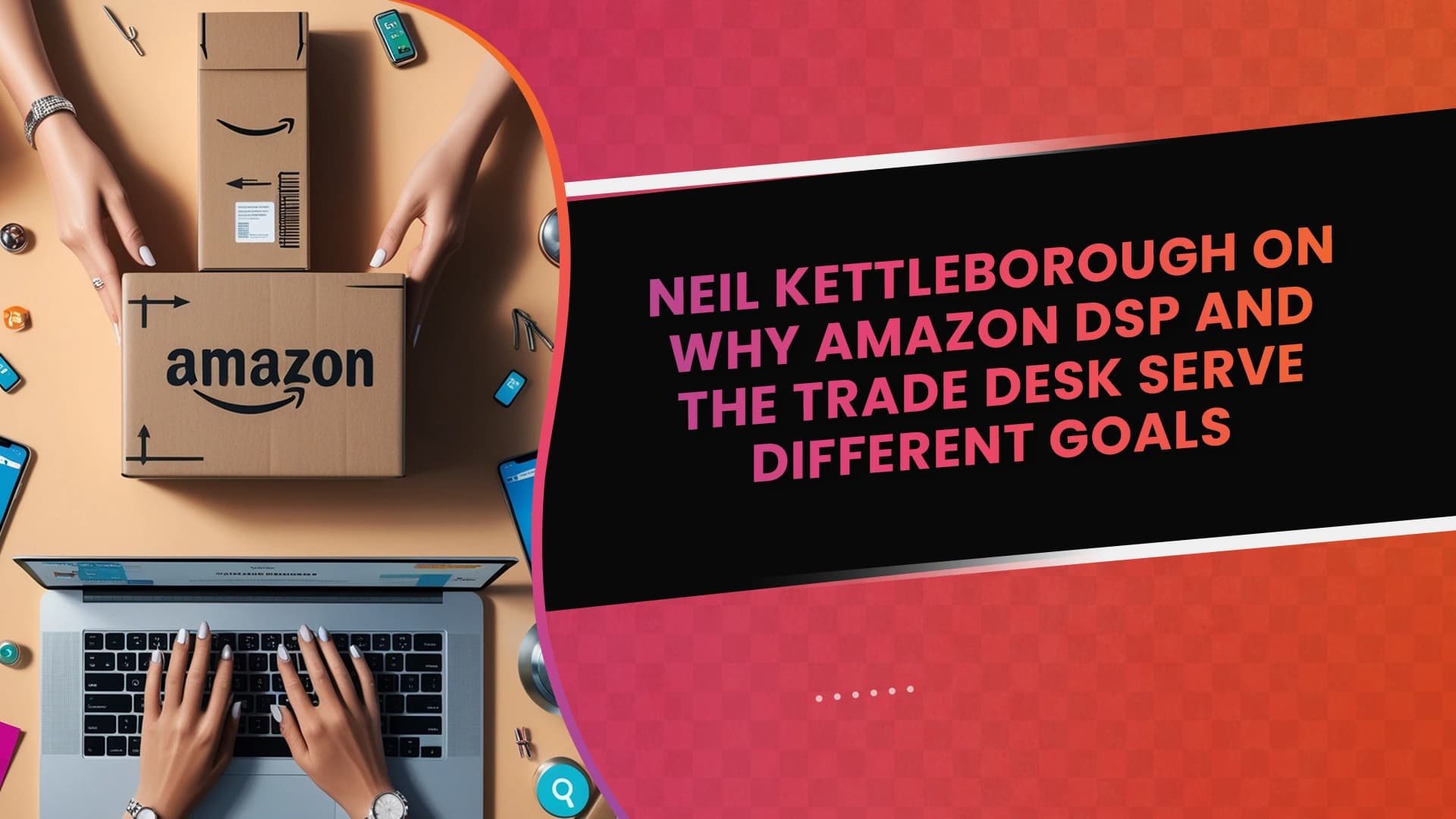When it comes to programmatic advertising, you often see two familiar names: Amazon DSP and Trade Desk. While both are viable platforms, they are built under different models and add value to advertisers in different ways.
As Neil Kettleborough a board member at Trader AI has stated, being deliberate in media buying first begins with understanding how these media platforms differ.
The Trade Desk: Flexibility Through Independence
The Trade Desk is often accepted as flexible and independent. It lets advertisers:
• Work with third-party data providers
• Connect with their favourite creative platforms
• Take advantage of sophisticated analytics tools
• Manage omnichannel campaigns across display, video, audio, native, and connected TV (CTV) with ease
That said, The Trade Desk does not own any inventory or audience data; it prevents access to inventory or audience data through integrations with data providers and supply-side platforms.
In a world of privacy with new regulations on the horizon, shortages of third-party cookies, and increasing consolidation of platforms, the lack of ownership and control can be a strategic disadvantage.
Neil Kettleborough elaborates on this when he points out that you are at the mercy of the integrations, which leaves you open to errors in targeting and attribution.
Amazon DSP: Performance Powered by First-Party Data
Amazon DSP is a true, vertically integrated platform that goes well beyond just media buying, while its most competitive edge is its first-party data ecosystem made up of a complete view of:
• Purchase history
• Browsing behavior
• Shopping cart behaviours
• Transactional outcomes across Amazon's portfolio
Unlike other DSPs that model intent, Amazon DSP allows advertisers to have directly comparable and truth-based data to act on in near real-time, all of which are impossible to find on any other DSP platform.
This many data provides:
• Hyper-targeted campaigns
• Real-time optimization
• Closed-loop attribution
• Easy access to high-impact placements on Fire TV, Twitch, Freevee, and prominent OTT apps like Disney+ and Roku
CTV Advantage: Ownership vs. Access
On the CTV front, Amazon DSP is the only one of the two options that stands out. The Trade Desk aggregates high-quality CTV inventory via its publisher partners (those partners include Hulu, Peacock, and Discovery+, just to name a few), but it doesn't own any of those partnerships, and it gathers it all through partnerships with SSPs and content providers.
Amazon DSP brings that third-party inventory through the SSPs and content providers, but also all its own traffic sources and channels, such as Fire TV, Twitch, and Freevee, giving advertisers
• Exclusive placements,
• Preferential pricing,
• Guaranteed brand-safe environments, and
• Better targeting through Amazon buyer data.
Being in control of its own media makes a big difference to the overall effectiveness of campaigns, in terms of campaign performance and media efficiency.
Which DSP Is Better?
Neil Kettleborough stresses that the correct platform is contingent on your company's goals, tech stack, and the level of emphasis you place on either ownership of data or flexibility on the platform.
✅ The Trade Desk
• Perfect for advertisers who want independence and customisation
• Offers fully omnichannel campaigns across all formats
• Great access to CTV through partnerships
• No exclusive inventory and no first-party data
✅ Amazon DSP
• Designed for brands that prioritise retail media integration and performance
• No one else has access to first-party data from actual customer behavior.
• Ownership of premium CTV inventory with priority placement and better rates
• Closed-loop attribution connects impressions to actual purchases in the real world
Final Thoughts
The advertising industry is returning to platforms with verifiable performance based on privacy-empowered first-party data and exclusive media ownership, thus making them non-negotiable.
For brands that have a sales/ROI objective, Amazon DSP is clearly the better option. However, for brands that want total flexibility and control to connect to whatever third-party service they want, The Trade Desk remains among the best options.
As Neil Kettleborough articulated, it's not about the "winner" for advertisers. It's about the right DSP for the right objective.
And therein lies the distinction that advertisers must recognize to remain competitive in the evolving programmatic landscape.
